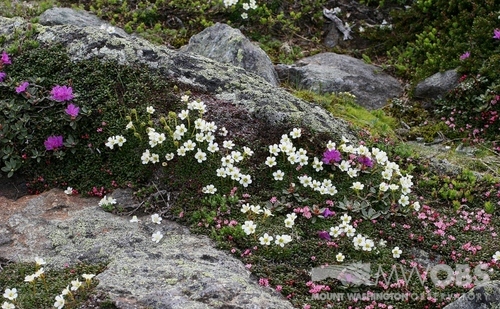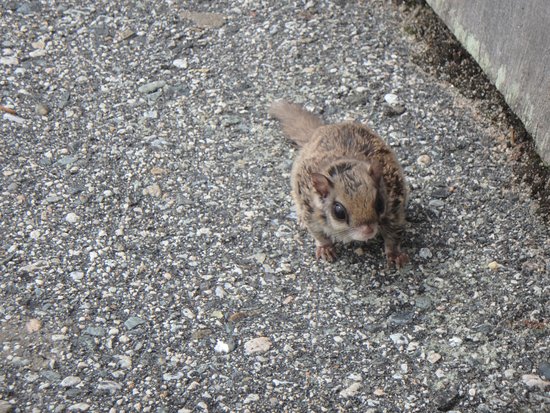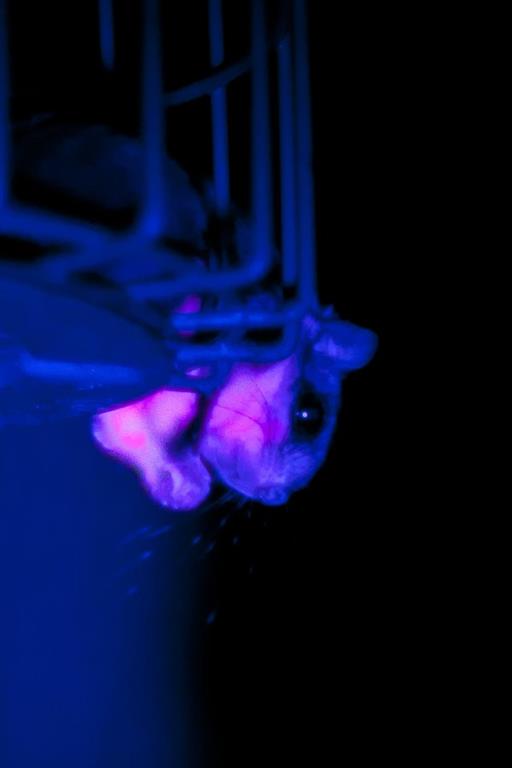Broadening My Horizons on the Alpine Tundra
2019-03-05 18:40:07.000 – Ian Bailey, Weather Observer/Education Specialist
As an Education Observer up on the summit, often times I’m tasked with developing and delivering programs based on weather and Mount Washington. It’s something that I’ve become very comfortable doing over the past few months, and I’ve become very passionate about my work. I like being able to share my knowledge about weather, and doing so in such a way that people can understand and better relate to the summit makes me very, very happy!
Aside from learning the intricacies of mountain weather, I’ve fallen back on my schooling and the classes I taught at my previous job very heavily. So it’s not terribly often that I get to learn things outside of my wheel house, then attempt to present them as if I am an expert on said topics. I had this opportunity this past shift, and I learned quite a lot about the mountain as a result!
On Tuesday we had several distance learning programs connecting to the summit to learn about what it’s like to live and work on Mount Washington. But they were also expecting content about the Alpine Tundra, the ecosystem that exists here at higher elevations. And with that, there was to be a discussion about the different plants and animals who live up here year round, and how they have adapted to the harsh conditions we experience. I had never looked into this topic before, and while curiosity about the topic had presented itself in my mind a couple of times, I had no background experience in either flora or fauna, let alone in extreme environments. With the expectation that I deliver high quality and educational content on the subject, I dove right in and learned lots of fascinating things!
I won’t present everything that I learned and talked about in those DLs, as it is a lot and you may have heard a decent amount of it before. But there were 2 things in particular, one about flora and one about fauna, that were really cool! When speaking about it with Will Broussard, the Guru in my opinion, I think he was just as surprised as I was to learn about these things! That’s how I know these are really cool, fresh facts at least!

I’ll start out with this famous flower! Diapensia, which is the small, beautiful white flower shown above, is incredibly hardy and well adapted to the harsh conditions in the Alpine Zone. It’s a perennial flower, and it can continue to live and function even when it is buried beneath the snow! But what was amazing to discover is that the species will actually go through the pollination process twice! Between May and June, it will release pollen across the mountain to attempt to pollenate previously dispersed seeds. And then, it will repeat the process between July and August, basically to make sure that as many of their seeds were pollinated as possible! As far as my basic research could discern, not many plants are known to do this, or at least in such a specific pattern, and it seems to be a pretty rare occurrence that really makes this flower unique! I’m certainly impressed by its determination!
And what about fauna? Welp. It turns out that my “cool fact of the week” regarding animals comes from the Flying Squirrel…

These cute little guys were quite a handful for us to deal with this past summer. They glide (not technically flying) on the thermals that come up the mountain from below, to feed on berries, insects, and some of the small plants that grow across the tundra. And we had a TON of them up here, getting into the building, our food, etc. They’re very fast, and would leap and glide off the observation deck into the rocks below to hide and escape once they got what they were looking for. So what’s the big deal then? I mean, they are cute, and can be quite a nuisance. But what makes them so very special other than gliding?
Well folks, apparently these little buggers can glow fluorescent pink…

You read correctly. When exposed to UV light/a black light, these guy’s little bodies glow bright pink. And not much is known or understood about why exactly this is. Is it genetic? Does it come as a result of their diet? No one knows for sure. But the general consensus seems to be that, since these guys can see really well in UV light, this glow is used as sort of a signal/communication between squirrels. And on top of that, it apparently helps them navigate in the dark, snowy conditions up here on the summit. While the validity of this still isn’t 100%, it’s still incredible and really cool to see!
So while it’s cool to learn about the extreme weather up here on the summit of Mt. Washington, there really is a ton of cool things you can learn about our alpine ecosystem as well! This is just the tip of the iceberg and some of the cooler things I learned this week. But I highly recommend, as you explore the wonder this mountain has to offer, that you look equally into the crazy evolution and adaptations the species that call this place home have made. I know you won’t be disappointed, and there are a ton of cool things to learn!
Ian Bailey, Weather Observer/Education Specialist
Team Flags Return for Seek the Peak’s 25th Anniversary
Team Flags Return for Seek the Peak's 25th Anniversary By MWOBS Staff Mount Washington Observatory is looking forward to continuing a much-loved tradition for Seek the Peak’s 25th Anniversary: Team flags. In inviting teams
Meet Summer Interns Zakiya, Max and Maddie
Meet Summer Interns Zakiya, Max and Maddie By MWOBS Staff We are excited to welcome six teammates to the summit of Mount Washington this summer! During their internship, these students and graduates will play
Saying Goodbye to the Summit
Saying Goodbye to the Summit By Alexis George After an extraordinary last three years working as a Weather Observer and Meteorologist, I am excited to pursue a different career. As sad I as am




